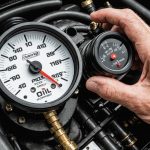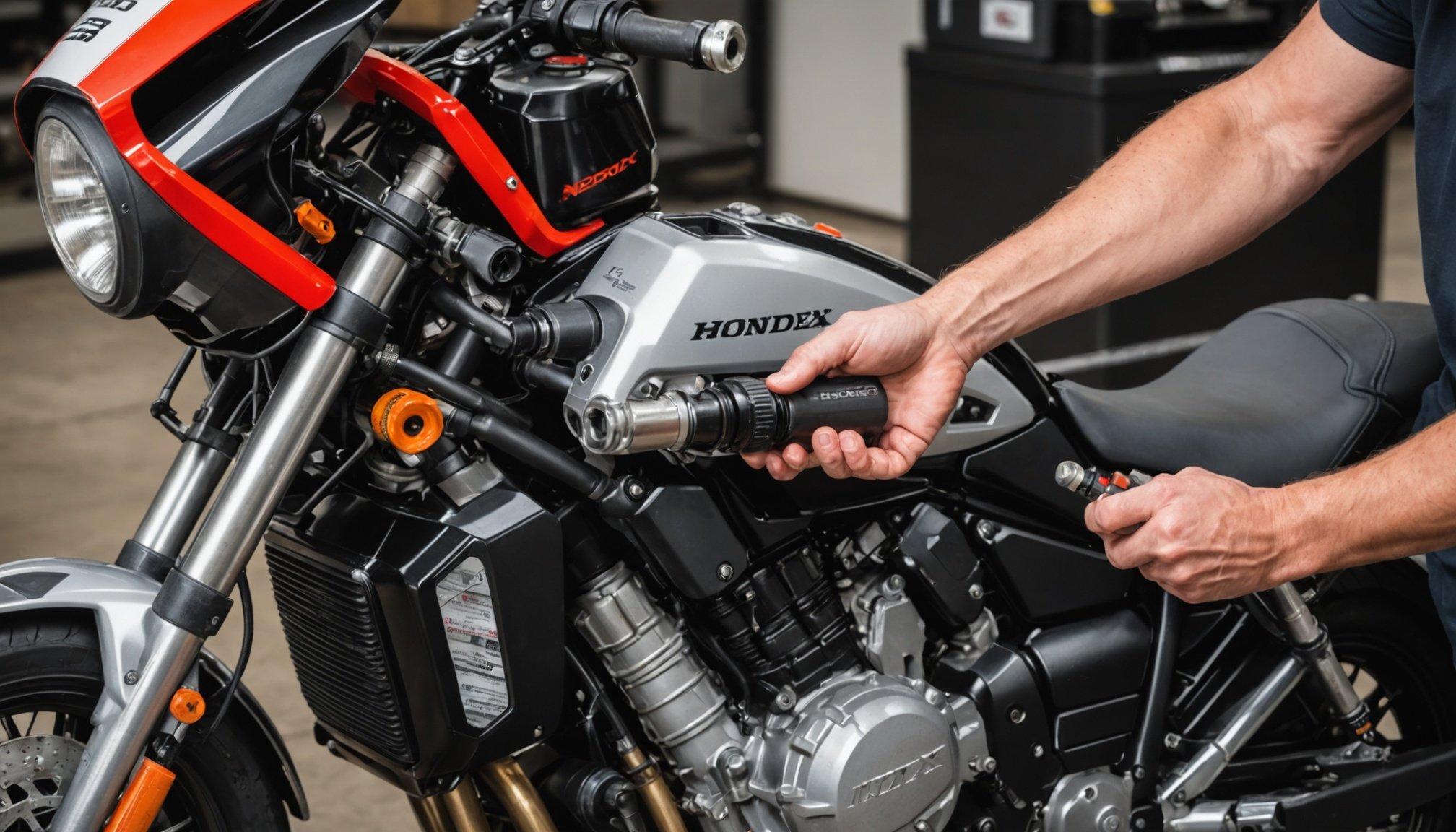Importance of Brake Fluid Maintenance
Brake fluid plays a crucial role in the safety of your Honda NC750X, serving as the medium that transfers force into pressure, a necessity for effective braking. When you neglect the maintenance of brake fluid, the results can be dire. Over time, brake fluid can absorb moisture, leading to a significant reduction in its boiling point. This might result in vapour lock, which compromises the brake system’s efficiency, increasing the risk of brake failure during critical situations.
Poor maintenance of brake fluid may also lead to internal corrosion within the braking system due to its hygroscopic nature. Such deterioration can damage essential components, escalating repair costs and affecting the safety of the motorcycle.
Topic to read : Ultimate methods to reduce handlebar vibration on your suzuki v-strom 650 for a smoother ride
Regular checks and maintenance of brake fluid ensure the safety and longevity of your motorcycle’s brake system. By keeping the brake fluid in optimal condition, you not only safeguard yourself but also the lifespan of your Honda NC750X. Routine fluid inspections allow you to catch signs of aging or contamination early, facilitating timely intervention. This preventive action is a small investment for the safety and performance benefits it delivers, providing peace of mind on every ride.
Tools and Materials Required for Brake Fluid Maintenance
Performing brake fluid maintenance on your Honda NC750X requires specific tools and materials to ensure safety and efficiency. It’s crucial to have the right set of brake fluid tools on hand before starting your maintenance tasks. At minimum, you’ll need a brake bleeder kit, wrench, and a reservoir container to capture the old fluid. These tools help in checking and refilling brake fluid efficiently, keeping your braking system in top condition.
Also to discover : Revitalize your yamaha sr400: the ultimate guide to carburetor maintenance for enhanced performance
Selecting the appropriate type of brake fluid for your Honda NC750X is equally essential. The type of fluid can significantly impact performance. Look for specific types such as DOT 3 or DOT 4, recommended for many motorcycles. These fluids are known for their resistance to moisture and high boiling points, providing reliable performance.
Safety is paramount during repair and maintenance. Essential protective equipment includes safety goggles and gloves to guard against spills and exposure to hazardous materials. Brake fluid can be damaging to your skin and harmful if it splashes into your eyes. Always work in a well-ventilated area, and take time to properly dispose of old brake fluid. By equipping yourself with the right maintenance supplies, you ensure a safer and more effective repair process.
Step-by-Step Guide to Checking Brake Fluid Level
Ensuring the correct brake fluid level is crucial for maintaining the safety of your Honda NC750X. Follow these steps for an effective brake fluid check.
Locating the Brake Fluid Reservoir
The first step is to find the brake fluid reservoir. For the Honda NC750X, it’s usually positioned near the handlebars. Look for a small, transparent container which allows you to see the fluid level. Ensure the motorcycle is on a flat, stable surface before proceeding.
Checking Fluid Level
To accurately check the fluid level, examine the markings on the side of the reservoir. The brake fluid should be between the “MIN” and “MAX” lines. If the fluid is below the “MIN” line, it’s a sign that you need to refill or inspect for potential leaks in the system.
Inspection of Fluid Condition
Assess the fluid’s condition by inspecting its colour and clarity. Fresh brake fluid is typically a light amber colour. If it appears dark or cloudy, this indicates contamination or aging, and it may necessitate a change. Regular inspections can help you identify abnormalities early, safeguarding your motorcycle’s brake system efficiency.
How to Safely Refill Brake Fluid
Refilling brake fluid is a critical aspect of NC750X maintenance that requires careful attention and precision. Ensuring you use the correct type of brake fluid is vital as it directly impacts the performance and safety of your motorcycle.
Precautions to Take Before Refilling
Begin by laying out a clean working space with safety gear, including goggles and gloves, to protect against spills. Ensure the Honda NC750X is on a flat surface to prevent any tilt that may affect fluid levels during the refilling process.
Step-by-Step Instructions for Refilling
- Carefully remove the reservoir cap, keeping an eye out for leaks or damaged seals, which could indicate a need for maintenance.
- Use a brake bleeder kit to draw out any old fluid, ensuring the reservoir is free from contaminants.
- Insert the new brake fluid, filling up to the recommended line while avoiding overfilling. It’s crucial to use DOT 3 or DOT 4 fluid, which suits the NC750X well.
- Tighten the cap securely and double-check for any signs of leakage.
Importance of the Correct Type of Brake Fluid
Using the improper fluid can cause system degradation and reduce braking effectiveness. Always reference the manufacturer’s guidelines for the most suitable fluid type. Regular maintenance checks following this refilling process ensure your brake system remains in optimal condition, enhancing your motorcycle’s overall safety.
Troubleshooting Common Brake Fluid Issues
Addressing brake fluid problems promptly is critical for maintaining the safety and efficiency of the Honda NC750X. Understanding the symptoms of these issues can lead to effective NC750X troubleshooting and prevent potentially dangerous situations.
Identifying Low Fluid Level Symptoms
One of the most common indicators of a brake fluid issue is a low fluid level. This can manifest as a soft or spongy feeling in your brake lever or a pronounced decrease in braking performance. Review your brake fluid levels regularly to catch and resolve these symptoms early.
Addressing Air in the Brake Lines
Air trapped in brake lines is another frequent problem. It can lead to a less responsive braking system and increase stopping distance. A proper bleeding process is essential for removing air bubbles. Utilize a brake bleeder kit for this procedure to ensure clear lines and reliable performance.
Recognizing Leaks and Their Implications
Brake fluid leaks are serious and may compromise the safety of your motorcycle. Common signs include fluid spots under the bike or a rapid drop in fluid levels. Thoroughly inspect the brake system to pinpoint and repair leaks swiftly. Early intervention can prevent further damage and maintain the safety and integrity of the Honda NC750X.
Recommended Maintenance Schedule for Brake Fluid
Maintaining a regular brake fluid maintenance schedule is crucial for the optimal performance and safety of your Honda NC750X. Routine checks not only preserve your motorcycle’s braking efficiency but also prevent costly repairs.
Suggested Intervals for Checking Brake Fluid: To ensure the brake system functions effectively, it’s recommended to inspect the brake fluid every 6 months. During your checks, assess the fluid’s level, clarity, and colour. Early detection of issues can avert potential problems.
Guidelines for Fluid Changes Based on Mileage: Replace brake fluid every two years or every 24,000 miles, whichever comes first. Frequent riders or those riding in harsh conditions might need more frequent changes. This approach keeps the system free from moisture and contaminants that compromise performance.
Importance of Seasonal Checks and Environmental Factors: Weather changes impact brake fluid conditions. It’s advisable to conduct thorough inspections before winter or after summer rides, when temperature fluctuations are most significant. Moreover, riding in humid or wet climates requires more diligent checks due to increased moisture absorption by the fluid.
Regular adherence to a maintenance schedule enhances the longevity and responsiveness of your Honda NC750X, ensuring a safer and more reliable ride.
Enhancing Understanding with Visual Aids
To make brake fluid maintenance more accessible, incorporating visual aids such as images and videos can be highly beneficial. These tools can clarify complex maintenance tasks, providing a clearer understanding for both novice and experienced riders.
Benefits of Visual Aids
Images and videos bridge the gap between theoretical knowledge and practical application. For instance, watching a step-by-step video on checking the brake fluid level can be more informative than just reading text, as it visually demonstrates each step involved. This facilitates a better grasp of proper techniques, reducing errors and enhancing confidence.
Types of Visual Aids to Consider
- Illustrated Guides: These combine text and visuals, aiding comprehension of brake fluid procedures through clear depictions of each step.
- Instructional Videos: Offer real-time demonstrations that can be paused or revisited, ensuring viewers understand each aspect of the maintenance process.
Resources for Accessing Instructional Content
For riders seeking high-quality visual aids, manufacturers’ websites often provide instructional videos specific to models like the Honda NC750X. Additionally, online platforms such as YouTube host a variety of tutorials that can help in visually explaining maintenance tasks, making them easier to follow and execute effectively.











